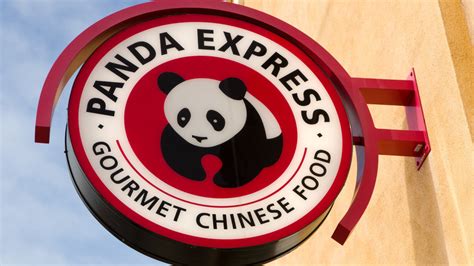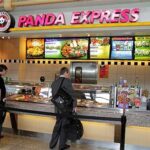
Panda Express, a fast-food chain synonymous with American-Chinese cuisine, faces growing challenges as its food quality and relevance come under scrutiny, prompting questions about its ability to adapt to evolving consumer preferences. Once a dominant force, the chain is now grappling with perceptions of declining quality, limited menu innovation, and increased competition, forcing it to re-evaluate its approach to stay relevant in the fast-casual dining landscape.
Panda Express, founded in 1983 by Andrew and Peggy Cherng, has long been a ubiquitous presence in American malls and food courts, celebrated for its convenient and affordable take on Chinese-inspired dishes. However, in recent years, the chain has faced increased criticism regarding the freshness and overall appeal of its food. Once lauded for its quick service and consistent offerings, Panda Express now navigates a complex environment where customer expectations are shifting, and competitors are offering more diverse and innovative options.
The core issue lies in the perception that the quality of Panda Express’s food has diminished over time. Many customers report that the dishes often taste mass-produced, lack authentic flavors, and are overly reliant on sugary sauces. “The food isn’t as good as it used to be,” as noted by several consumer reviews and food critics, highlighting a significant concern for the brand. This decline in perceived quality is particularly problematic as consumers become increasingly discerning about the food they consume, seeking fresher ingredients and more complex flavor profiles.
Menu innovation at Panda Express has also been a sticking point. While the chain has introduced new items periodically, many of these additions have failed to resonate with customers in the same way as its classic dishes like Orange Chicken. “Panda Express has struggled to introduce new items that can rival the popularity of Orange Chicken,” points out a food industry analyst. This lack of successful innovation has left the menu feeling stagnant, especially when compared to fast-casual competitors who regularly introduce limited-time offerings and cater to specific dietary needs.
Competition in the fast-casual dining sector has intensified, with numerous chains offering higher-quality ingredients, customizable options, and diverse cuisines. Restaurants such as Chipotle, Sweetgreen, and Cava have gained popularity by emphasizing fresh, locally sourced ingredients and catering to health-conscious consumers. These competitors have raised the bar for fast-food quality, putting pressure on established chains like Panda Express to adapt.
To address these challenges, Panda Express has initiated several strategies aimed at improving food quality and enhancing the customer experience. One key initiative involves investing in better ingredients and refining cooking techniques to ensure freshness and flavor. “We are committed to using high-quality ingredients and continually improving our culinary processes,” a Panda Express spokesperson stated, underscoring the company’s dedication to enhancing its offerings.
Panda Express has also focused on improving its restaurant environments. The company has remodeled numerous locations to create a more inviting and modern atmosphere, incorporating updated décor and more efficient layouts. These renovations aim to enhance the overall dining experience and attract a broader range of customers.
Digital innovation is another critical area of focus for Panda Express. The company has invested heavily in its mobile app and online ordering system to provide customers with a seamless and convenient way to order food. Through the app, customers can customize their orders, track their rewards, and receive exclusive deals. This digital strategy aims to improve customer loyalty and drive sales through online channels.
Furthermore, Panda Express has explored menu diversification to cater to changing consumer preferences. While Orange Chicken remains a cornerstone of the menu, the chain has introduced healthier options such as Wok Smart dishes that are lower in calories and sodium. It has also experimented with regional flavors and limited-time offerings to appeal to a broader range of tastes. The company has also begun to test new concepts, such as Panda Bowls, that allow customers to customize their meals with various bases, proteins, and toppings.
However, the challenge for Panda Express lies in balancing its efforts to improve quality and innovation with its commitment to affordability and convenience. The chain has built its reputation on providing fast, affordable meals, and any significant price increases could alienate its core customer base. Similarly, overhauling the menu too drastically could risk losing the familiarity and comfort that many customers associate with Panda Express.
The brand’s future success hinges on its ability to navigate these challenges effectively. Panda Express must continue to invest in improving food quality, enhancing the customer experience, and adapting to changing consumer preferences while maintaining its core values of affordability and convenience. By doing so, the chain can revitalize its brand and ensure its continued relevance in the competitive fast-casual dining landscape.
The issues facing Panda Express are not unique to the chain but reflect broader trends in the fast-food industry. As consumers become more informed and discerning, they are demanding higher-quality ingredients, more diverse menu options, and a greater emphasis on sustainability and ethical sourcing. Fast-food chains that fail to adapt to these changing expectations risk losing market share to competitors who are more attuned to consumer needs.
One of the primary factors contributing to the challenges faced by Panda Express is the increasing consumer demand for healthier food options. In recent years, there has been a growing awareness of the health risks associated with processed foods and sugary drinks. As a result, many consumers are actively seeking out healthier alternatives when dining out.
Panda Express, with its menu dominated by high-calorie, high-sodium dishes, has struggled to keep pace with this trend. While the chain has introduced some healthier options, such as its Wok Smart menu items, these offerings have not been enough to offset the perception that Panda Express is an unhealthy choice.
Another factor contributing to the challenges faced by Panda Express is the increasing competition from other fast-casual chains. In recent years, there has been a proliferation of new fast-casual restaurants that offer higher-quality ingredients, more diverse menu options, and a greater emphasis on sustainability and ethical sourcing.
These competitors have raised the bar for fast-food quality, putting pressure on established chains like Panda Express to adapt. To compete effectively, Panda Express must differentiate itself by offering unique menu items, improving its restaurant environments, and enhancing the customer experience.
The rise of online ordering and delivery services has also created new challenges for Panda Express. With the increasing popularity of apps like Uber Eats and DoorDash, consumers can now order food from a wide range of restaurants without leaving their homes. This has made it more difficult for Panda Express to attract customers to its physical locations.
To address this challenge, Panda Express has invested heavily in its mobile app and online ordering system. The company has also partnered with third-party delivery services to expand its reach. However, Panda Express must continue to innovate in the digital space to remain competitive in the long term.
The labor market presents another significant challenge for Panda Express. The fast-food industry is known for its high employee turnover rates and low wages. This can make it difficult for Panda Express to attract and retain qualified employees.
To address this challenge, Panda Express has implemented a number of initiatives aimed at improving employee satisfaction. These initiatives include offering competitive wages and benefits, providing opportunities for advancement, and creating a positive work environment. However, Panda Express must continue to invest in its employees to ensure that it can provide high-quality service to its customers.
The COVID-19 pandemic has had a profound impact on the restaurant industry, and Panda Express has not been immune to its effects. The pandemic has led to a decline in foot traffic at many Panda Express locations, particularly those located in malls and food courts.
To mitigate the impact of the pandemic, Panda Express has implemented a number of safety measures, such as enhanced cleaning protocols, social distancing guidelines, and contactless ordering options. The company has also focused on expanding its delivery and takeout services.
Looking ahead, Panda Express faces a number of challenges and opportunities. To succeed in the long term, the chain must adapt to changing consumer preferences, improve its food quality, enhance the customer experience, and address its labor challenges. By doing so, Panda Express can revitalize its brand and ensure its continued relevance in the competitive fast-casual dining landscape.
The company needs to prioritize several key areas to regain its competitive edge. First, it must focus on improving the quality of its ingredients. This means sourcing fresher produce, using higher-quality meats, and reducing the reliance on processed foods. By investing in better ingredients, Panda Express can enhance the flavor and nutritional value of its dishes, appealing to health-conscious consumers.
Second, Panda Express should expand its menu to offer more diverse and innovative options. This could include introducing new regional flavors, catering to specific dietary needs, and offering customizable meal options. By diversifying its menu, Panda Express can attract a wider range of customers and keep its offerings fresh and exciting.
Third, Panda Express must enhance the customer experience by improving its restaurant environments and providing exceptional service. This could involve remodeling locations to create a more inviting atmosphere, streamlining the ordering process, and training employees to provide friendly and efficient service. By focusing on the customer experience, Panda Express can build loyalty and attract repeat business.
Fourth, Panda Express should continue to invest in digital innovation to improve convenience and enhance customer engagement. This could include enhancing its mobile app, expanding its online ordering options, and leveraging data analytics to personalize the customer experience. By embracing digital technology, Panda Express can stay ahead of the curve and meet the evolving needs of its customers.
Fifth, Panda Express must address its labor challenges by improving employee satisfaction and reducing turnover. This could involve offering competitive wages and benefits, providing opportunities for advancement, and creating a positive work environment. By investing in its employees, Panda Express can improve service quality and reduce costs associated with employee turnover.
In addition to these specific initiatives, Panda Express must also focus on building a strong brand identity and communicating its values to customers. This could involve highlighting its commitment to quality, sustainability, and community involvement. By building a strong brand, Panda Express can differentiate itself from competitors and attract customers who share its values.
Ultimately, the success of Panda Express will depend on its ability to adapt to changing consumer preferences, improve its food quality, enhance the customer experience, and address its labor challenges. By focusing on these key areas, Panda Express can revitalize its brand and ensure its continued relevance in the competitive fast-casual dining landscape. The company’s leadership recognizes the need for change and is committed to investing in the necessary resources to achieve its goals.
While the challenges facing Panda Express are significant, the company has a strong foundation upon which to build. With its established brand, extensive network of locations, and dedicated team of employees, Panda Express has the potential to overcome its current struggles and reclaim its position as a leader in the fast-casual dining industry. The key will be to embrace innovation, prioritize quality, and focus on the customer experience.
One potential avenue for innovation lies in embracing customization. Consumers increasingly desire the ability to tailor their meals to their specific preferences and dietary needs. Panda Express could explore offering build-your-own bowl options or allowing customers to swap out ingredients in existing dishes. This level of customization could attract a wider range of customers, including those with dietary restrictions or preferences.
Another opportunity for Panda Express lies in expanding its menu to include more plant-based options. The demand for vegan and vegetarian food is growing rapidly, and Panda Express could capitalize on this trend by offering plant-based versions of its classic dishes. This could attract a new segment of customers who are looking for healthier and more sustainable food choices.
Panda Express could also benefit from partnering with local farms and suppliers to source fresher and more sustainable ingredients. This would not only improve the quality of its food but also enhance its brand image and appeal to environmentally conscious consumers. By supporting local communities, Panda Express can build goodwill and strengthen its relationships with its customers.
In addition to these specific initiatives, Panda Express must also focus on creating a more engaging and interactive customer experience. This could involve using technology to personalize the ordering process, offering loyalty rewards, and hosting events and promotions to attract customers. By creating a more engaging customer experience, Panda Express can build loyalty and encourage repeat business.
Ultimately, the future of Panda Express will depend on its ability to adapt to changing consumer preferences, embrace innovation, and focus on the customer experience. While the challenges are significant, the opportunities are even greater. By investing in its food, its people, and its technology, Panda Express can revitalize its brand and ensure its continued success in the competitive fast-casual dining landscape. The journey may be challenging, but the potential rewards are well worth the effort. The brand’s legacy and widespread recognition provide a solid foundation for a successful turnaround. The key is to listen to customer feedback, experiment with new ideas, and remain committed to providing a high-quality and enjoyable dining experience.
Frequently Asked Questions (FAQ)
1. Why is Panda Express facing challenges now?
Panda Express is facing challenges primarily due to perceptions of declining food quality, a lack of significant menu innovation compared to competitors, and increasing competition from fast-casual chains offering fresher ingredients and diverse cuisines. As consumer preferences shift towards healthier and more customizable options, Panda Express is under pressure to adapt its traditional offerings.
2. What are consumers complaining about regarding the food at Panda Express?
Consumers often express concerns about the food tasting mass-produced and lacking authentic flavors, with an over-reliance on sugary sauces. Many feel the quality has declined over time, and the ingredients are not as fresh as those offered by competing fast-casual restaurants.
3. What steps is Panda Express taking to address these issues?
Panda Express is implementing several strategies, including investing in higher-quality ingredients, refining cooking techniques to improve freshness and flavor, remodeling restaurant locations for a more modern atmosphere, enhancing its mobile app and online ordering system, and exploring menu diversification with healthier options and regional flavors.
4. How is Panda Express competing with other fast-casual chains?
To compete, Panda Express is trying to differentiate itself by investing in technology to make ordering easier, innovating in their menu to offer more variety, and attempting to improve the overall dining experience. However, it still needs to balance these improvements with affordability, which has always been a key part of its brand.
5. What does the future hold for Panda Express?
The future of Panda Express depends on its ability to adapt to changing consumer preferences, improve its food quality, enhance the customer experience, and address labor challenges. By focusing on these areas, Panda Express can revitalize its brand and ensure its continued relevance in the competitive fast-casual dining landscape. This involves a commitment to innovation, quality, and a customer-centric approach.

![Oreo’s [Flavor] So Good, It Deserves a Petition for Permanence!](https://duniateknoku.com/wp-content/uploads/2025/06/unnamed-file-870-150x150.jpg)


![Oreo’s [Flavor] So Good, Fans Will Petition to Keep It Forever!](https://duniateknoku.com/wp-content/uploads/2025/06/unnamed-file-867-150x150.jpg)




